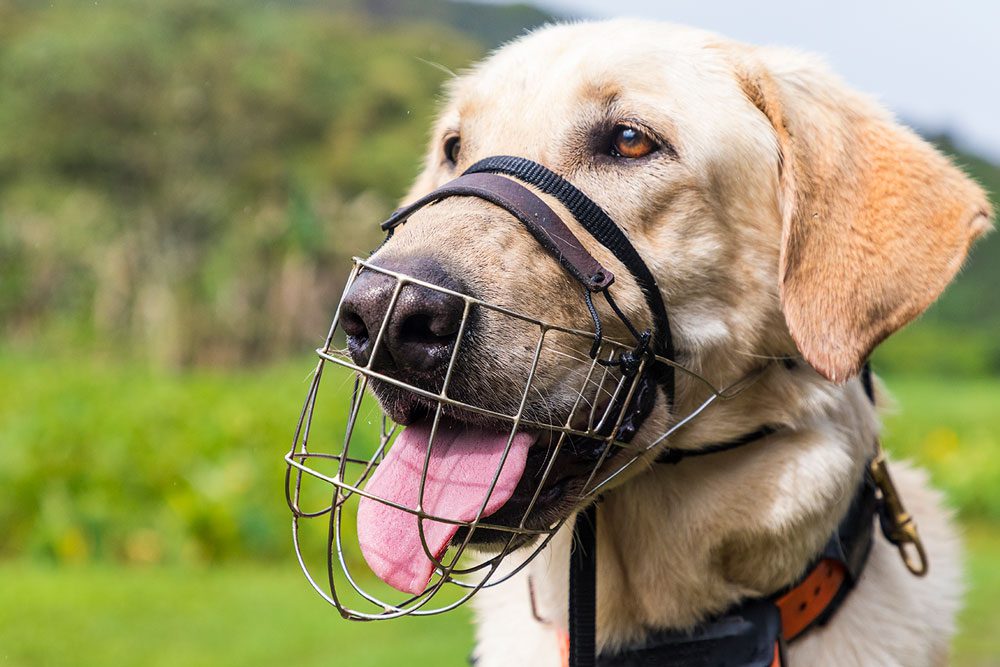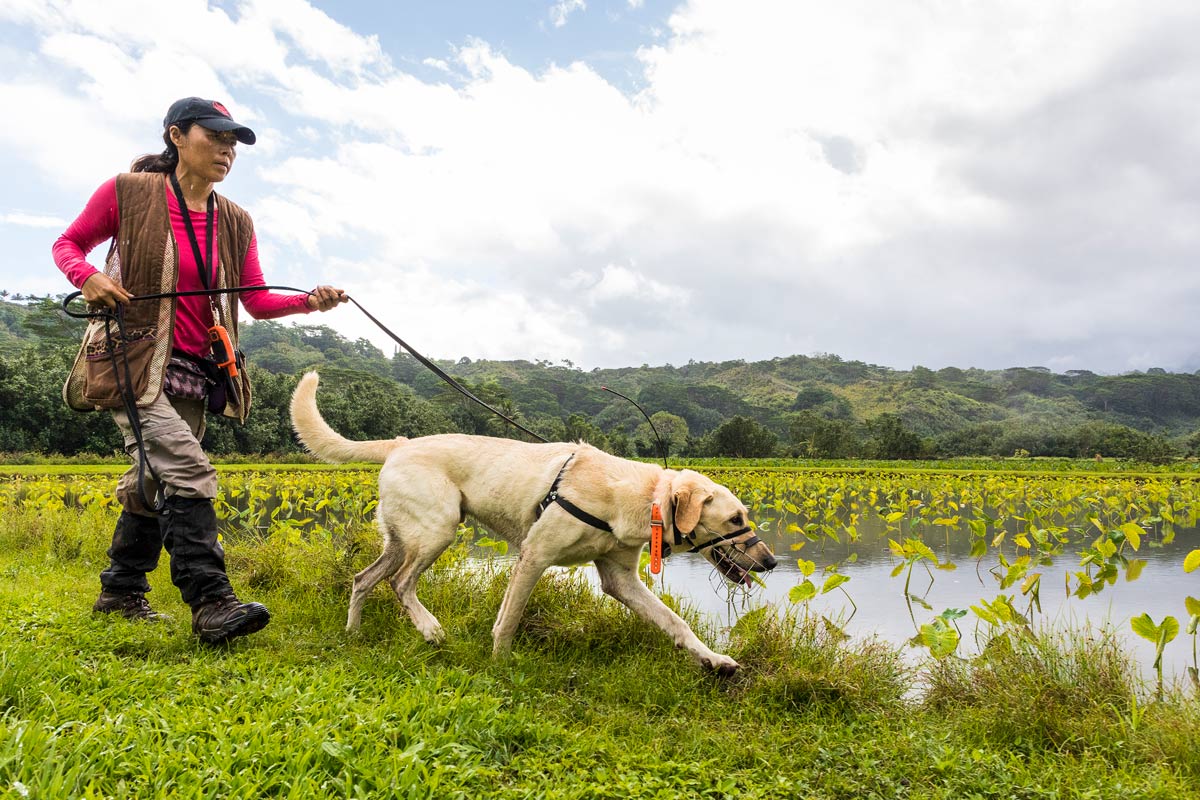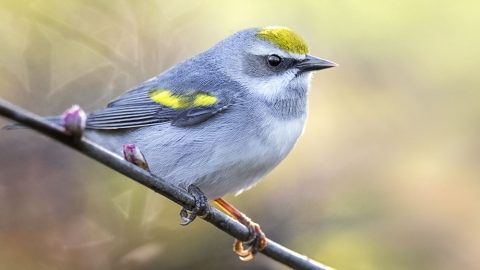On Kauai, Hawaiian Ducks Are in a Dire Situation. Dogs Are Helping
By Kim Steutermann Rogers
Hawaiian Duck by Gary Kramer. June 17, 2019From the Summer 2019 issue of Living Bird magazine. Subscribe now.
Labrador retrievers are America’s favorite dog. Out of 193 breeds registered by the American Kennel Club, Labradors rank first for friendliness. They’re bred for hunting, so the working breed might not be considered a close friend to birds, especially ducks. But Solo, a lean 80-pound yellow lab in Hawaii, may be changing the breed’s reputation.
Last year, Solo participated in a study on the Hawaiian Island of Kauai at the Hanalei National Wildlife Refuge, where endangered waterbirds are succumbing to avian botulism type C, a deadly paralytic disease found worldwide.
“The goal is to find carcasses quicker,” said Kim Uyehara, a U.S. Fish and Wildlife Service biologist at the 917-acre wetland refuge covered with leafy taro plants and tall grasses. Finding a dead bird fast means preventing a botulism outbreak, she says.

Solo and three other dogs went head to head against humans to determine which mammal was better at finding “hides,” the hidden carcasses of birds, in a double-blind study conducted by the U.S. Geological Survey.
“When I saw the numbers of how many more birds the dogs were finding, I realized we might have been finding only half the carcasses,” Uyehara said. “The trials helped me see why outbreaks continue even when we think we’ve found all the carcasses.”
Avian botulism type C is a naturally occurring soil bacterium, Clostridium botulinum, which produces a powerful neurotoxin during warm, wet, and stagnant conditions—just the kind that can occur year-round in Hawaii. Since 2011, more than 1,300 waterbirds have been killed or sickened by the disease at the Hanalei refuge, with over 90% of the mortalities among five federally endangered species. The Koloa Maoli, or Hawaiian Duck, is most susceptible to botulism, because it’s a dabbler.
“Dabblers spend a lot of time filter feeding in sediments and shallow water,” Uyehara said. “So they’re more likely to ingest infected insects than say a Nene [Hawaiian Goose] that spends a lot of time foraging on grasslands at the edges of wetlands.”
Koloa are medium-sized ducks that closely resemble the female Mallard. According to Uyehara, recent genetic studies reveal the Koloa is the result of ancient hybridization between migratory Mallards and the only other endemic duck in the Hawaiian archipelago, the Laysan Duck. Yet it’s the modern hybridization of Koloa with nonnative Mallards that threatens the genetic survival of the species today. The last stronghold of genetically pure Koloa live at the Hanalei refuge. According to the USFWS recovery plan for the species, some 2,000 out of the estimated total population of 2,200 Koloa live on Kauai. Botulism outbreaks there could drag the species to the brink of extinction.
And all it takes is one dead bird to spark an avian botulism epidemic, if an infected carcass is not removed before insects find it and lay eggs that hatch into maggots. These hot maggots carry a concentrated amount of the neurotoxin. And Koloa eat maggots; just a few infected maggots could be a killer. The key to preventing an outbreak is removing the bird carcass from the environment.

In 2014, Uyehara convened an Avian Botulism Task Force meeting to get counsel from experts far and wide on how to address this escalating problem. That’s when the idea for a pilot study using scent-detection dogs surfaced.
It’s not far-fetched. Solo joins the growing ranks of dogs working in wildlife conservation, sniffing out ivory illegally smuggled out of Africa and scenting orca scat floating in the Pacific Ocean to help scientists study killer whale biology. In Hawaii, terriers have been used to detect the presence of rats at a seabird sanctuary, and an English springer spaniel helped pinpoint the first known Band-rumped Storm-Petrel nest in a crack of lava.
Solo the yellow lab could do more than prevent outbreaks—the dog could even help infected birds survive. If a botulism-sick bird is caught in time, biologists can administer an antitoxin to save its life. Uyehara is still waiting for the final results of the research study, due out later this year, before she can officially start a botulism dog-detection program at Hanalei. But she’s already starting a volunteer program to get dogs sniffing around the refuge because she’s certain the dogs can help the ducks.
“With dogs, I think we can short-stop those outbreaks,” Uyehara said.
Kim Steutermann Rogers is a freelance journalist based on the Hawaiian Island of Kauai. Her work has appeared on Smithsonian. com and Audubon.org.

All About Birds
is a free resource
Available for everyone,
funded by donors like you
American Kestrel by Blair Dudeck / Macaulay Library



